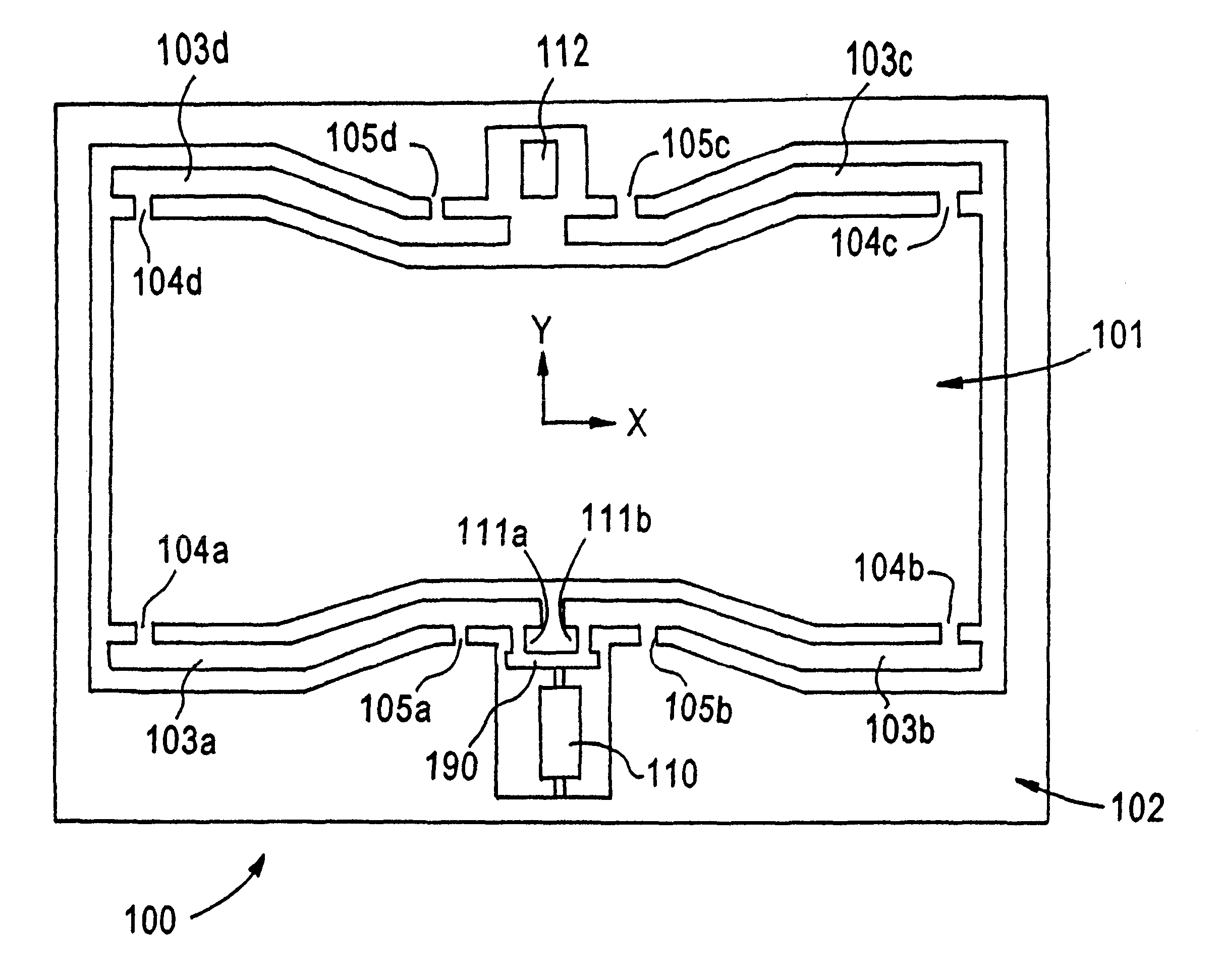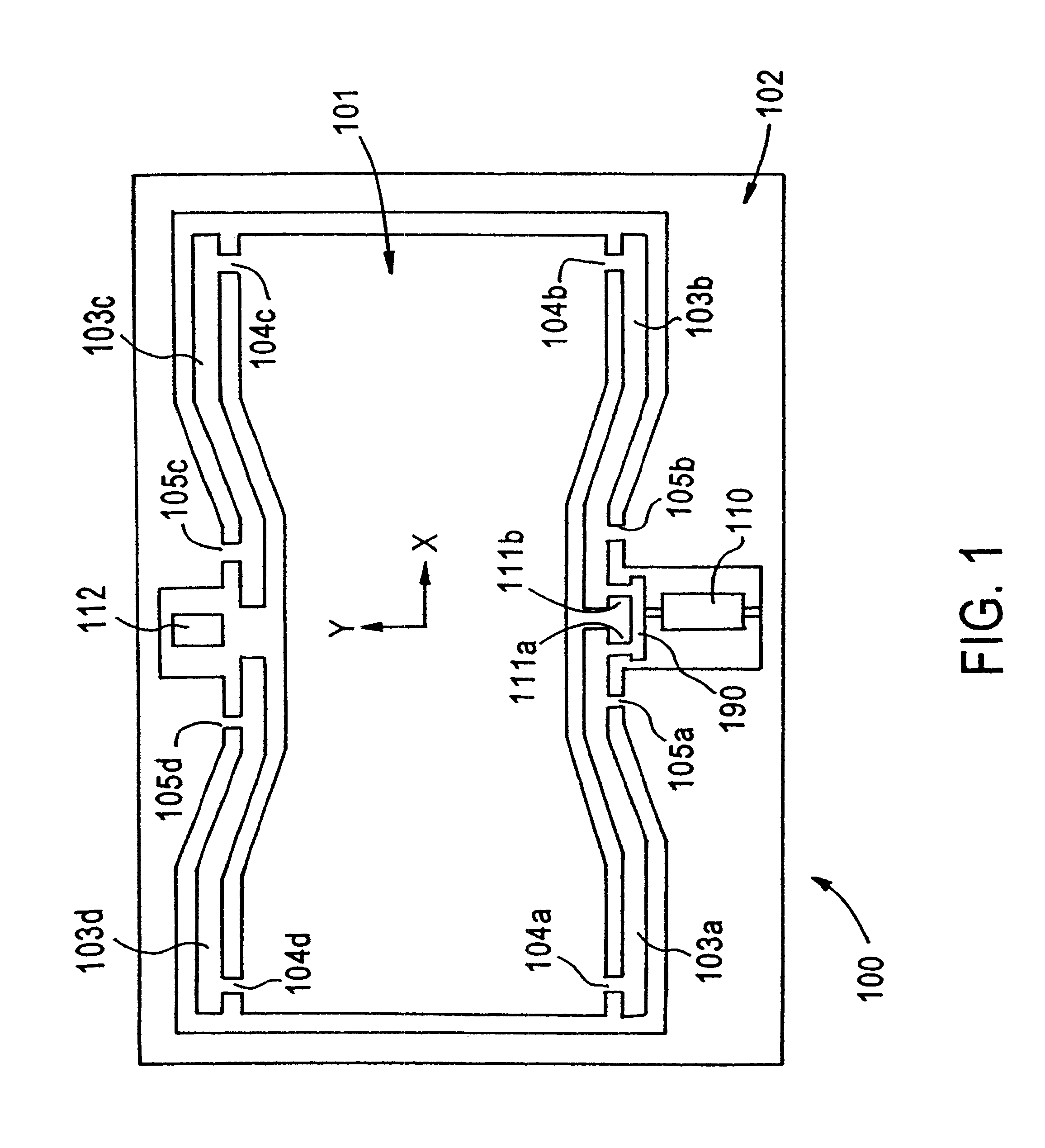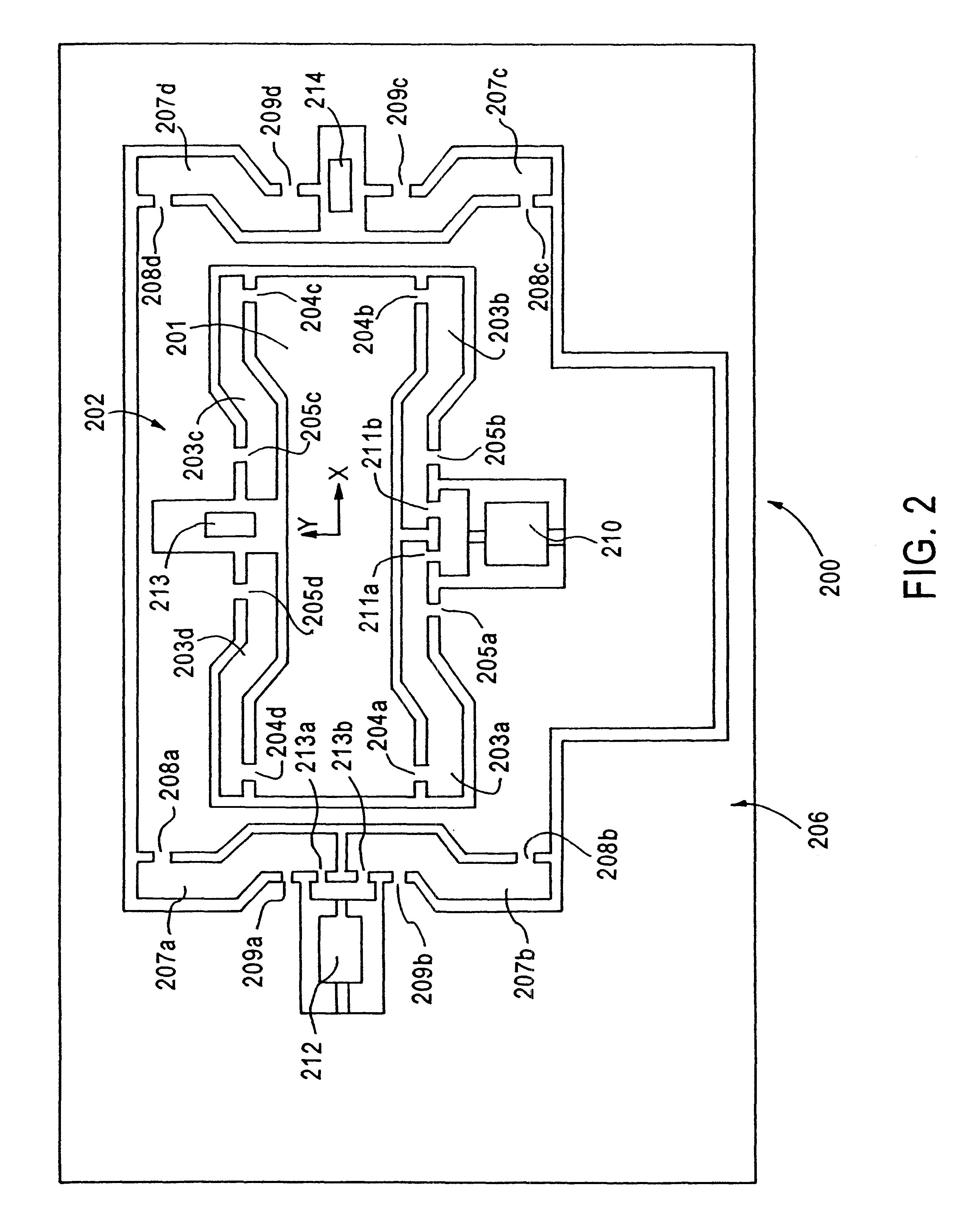Six-degree of freedom micro-positioner
a micro-positioner and freedom technology, applied in the direction of mechanical control devices, ignition automatic control, instruments, etc., can solve the problems of requiring substantial worker time, affecting the quality of the finished product, so as to achieve the effect of fine precision object manipulation
- Summary
- Abstract
- Description
- Claims
- Application Information
AI Technical Summary
Benefits of technology
Problems solved by technology
Method used
Image
Examples
Embodiment Construction
One-Degree of Freedom embodiment:
FIG. 1 depicts a view of a high performance, low fabrication cost deformable structure parallel cantilever biaxial micro-positioning stage 100 in accordance with one aspect of the present invention. The deformable structure micro-positioner includes a moving stage 101 formed within and planar to a support structure 102. The moving stage is connected to the support structure via four levers 103a, 103b, 103c and 103d. Lever 103a is attached to the moving stage via flexure 104a and to the support structure via flexure 105a. Lever 103b is attached to the moving stage via flexure 104b and to the support structure via flexure 105b. Lever 103c is attached to the moving stage via flexure 104c and to the support structure via flexure 105c. Lever 103d is attached to the moving stage via flexure 104d and to the support structure via flexure 105d.
The four levers are bi-axially symmetrical. Lever pair 103a and 103d is symmetrical to lever pair 103b and 103c with ...
PUM
 Login to View More
Login to View More Abstract
Description
Claims
Application Information
 Login to View More
Login to View More - R&D
- Intellectual Property
- Life Sciences
- Materials
- Tech Scout
- Unparalleled Data Quality
- Higher Quality Content
- 60% Fewer Hallucinations
Browse by: Latest US Patents, China's latest patents, Technical Efficacy Thesaurus, Application Domain, Technology Topic, Popular Technical Reports.
© 2025 PatSnap. All rights reserved.Legal|Privacy policy|Modern Slavery Act Transparency Statement|Sitemap|About US| Contact US: help@patsnap.com



